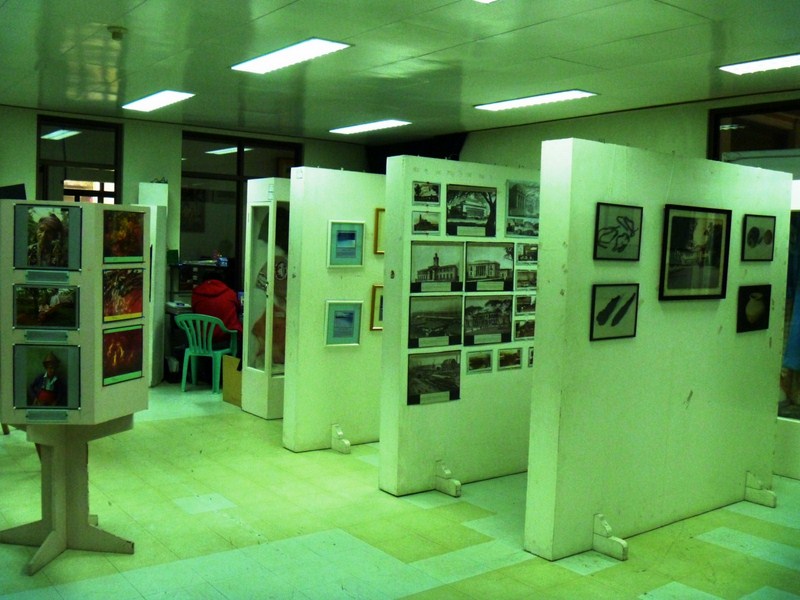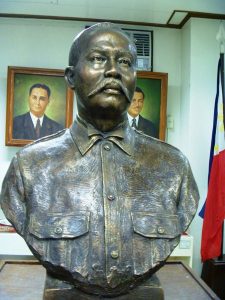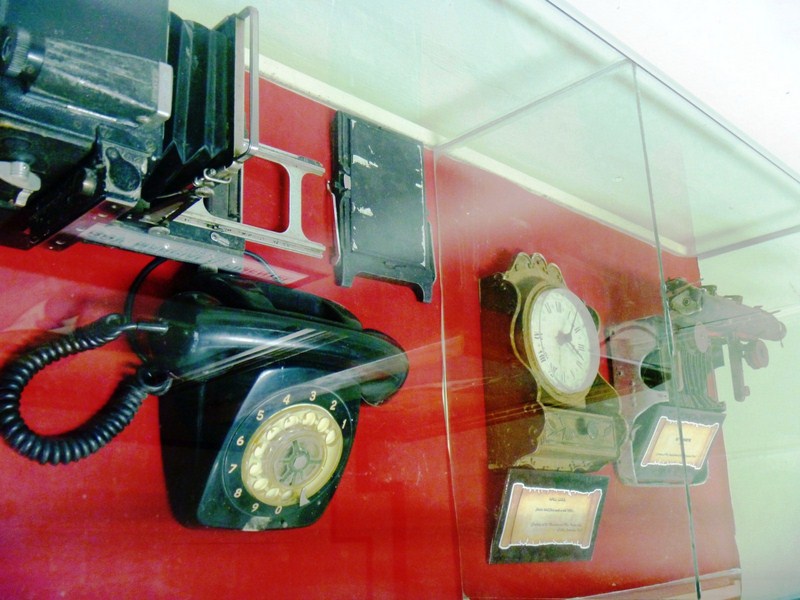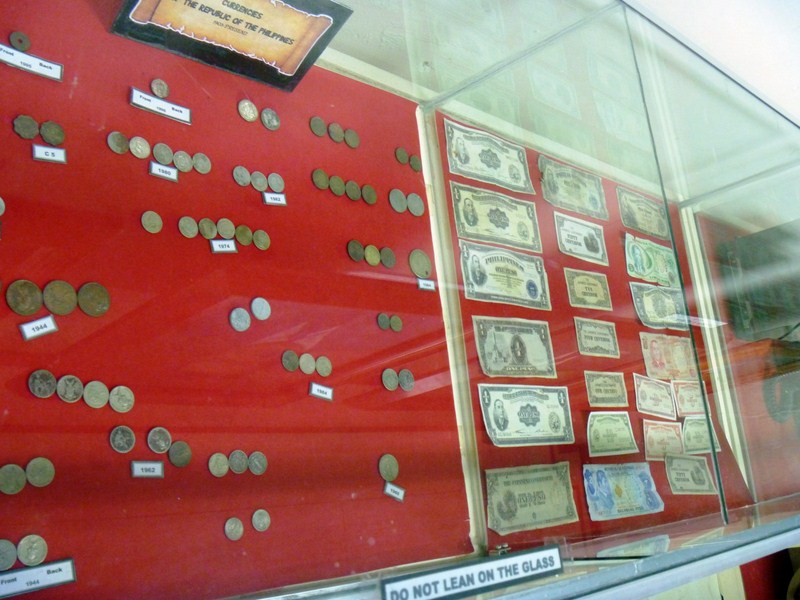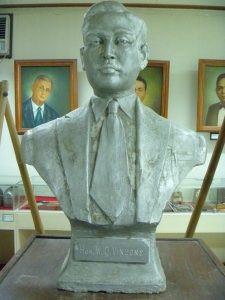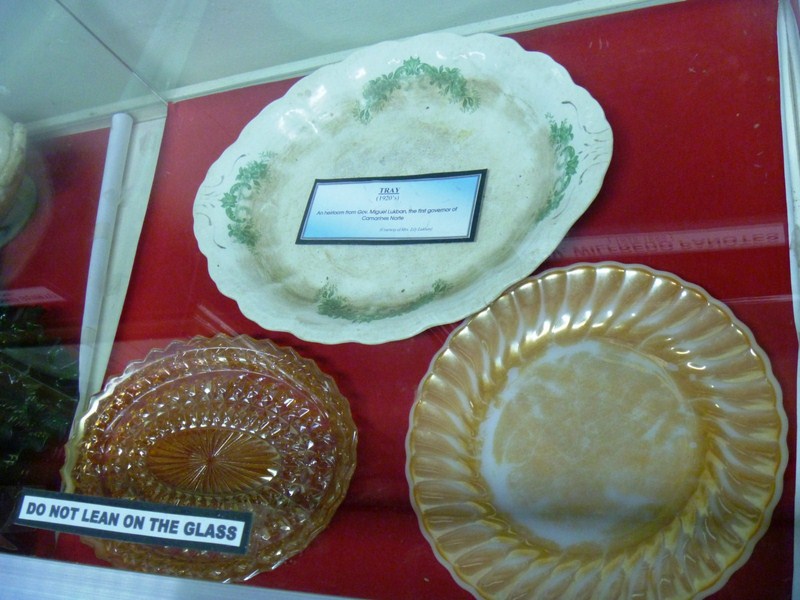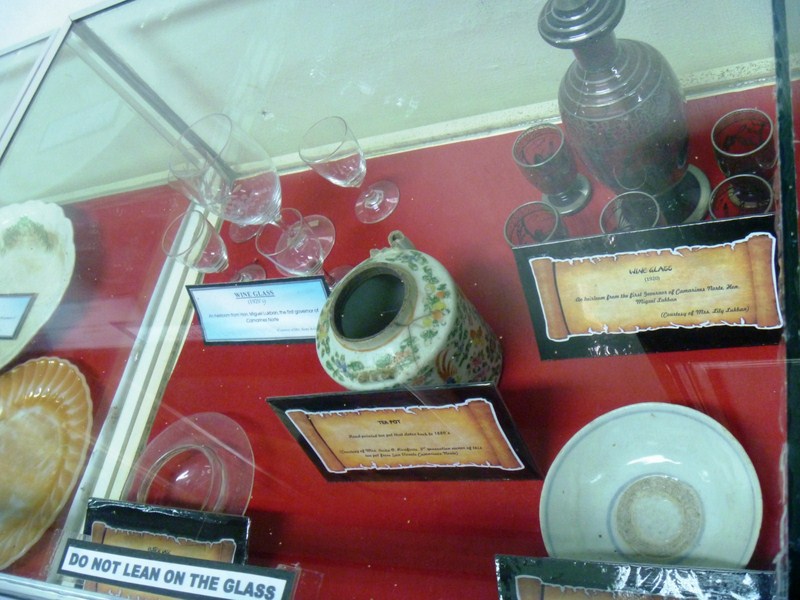| The Hike Begins ….. |
From the second day onwards, right after the Pabirik Festival, it was raining from time to time and heavy rain welcomed us early in the morning of the third day, the day we were to travel to the Calaguas Islands and camp overnight. A phone call confirmed our worst fears – the trip to the Calaguas Islands was cancelled due to rain and high waves. Regretfully, we switched to Plan B – a hike to Nakali Falls in San Lorenzo Ruiz town, rain or shine. We were all driven to the municipal hall where two guides were assigned to us by the mayor. Amable Miranda and Roufel “Raffy” de Vera of the Provincial Tourism Office also accompanied us. As it was still early in the morning, we expected the round trip trek to the falls to be over in four hours and that we would be back at the municipal hall by lunch time. How wrong we were. Regretfully, for the trek, we only brought bottled water and some snacks we bought at Daet.
 |
| Me with Kara, Raffy and our guide |
The trail was understandably wet and muddy due the previous night and today’s rain and I regretted having worn slippers instead of sandals which, more often than not, got stuck in the muck. The uphill, downhill and sometimes flat trail brought us hiking through coconut and pineapple plantations, boulder-strewn river banks as well as crossing the Matacong hanging bridge. I also made a wrong turn along the way, hiking alone for some time before retracing my steps and catching up with them. A number of times, media colleague Lito Cinco wanted to quit, uttering his famous line “This is where I draw the line” a number of times, only to continue on his way, goaded on by Kara Santos.
| Dining on coconut meat and juice |
We all finally drew the line when we neared the falls as the strong river current, even with a guide rope thrown across, prevented us from hurdling the final leg. Even if we did, heavy rain would have prevented us from using our cameras much less get a good, clear shot. We just contented ourselves with bathing the cool river waters. It was now late in the afternoon and we hadn’t eaten lunch, just snacks, water and the juice and meat of some coconuts plucked from trees at a shack where we made a stopover and rested.
 |
| Contenting ourselves with bathing at the river |
The thought of a late lunch waiting for us at the municipal hall plus a hot shower and warm bed at the resort goaded us to reduce the return hike from the original 4 down to 3 hours, helped along by my walking barefooted in the mud, however risky it may be. The others made better time than us and Mark Nunez and I brought up the rear, as we finally staggered back to the town, so weak that we bought and gobbled up chocolate bars at the first sari-sari store we saw just to get us again walking the last few strides to the municipal hall. Upon arrival, town mayor Nelson P. de los Santos welcomed us with a much anticipated but very late lunch. The others were already eating when we arrived. Back at Bagasbas Lighthouse Resort, we had to coax our weary and aching bodies just to eat our dinner. Sleep came easy to us the weary that night. Check out my Business Mirror article “Camarines Norte: 400 Years of Keeping the Faith.”


